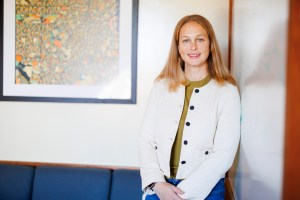Science & Tech
-
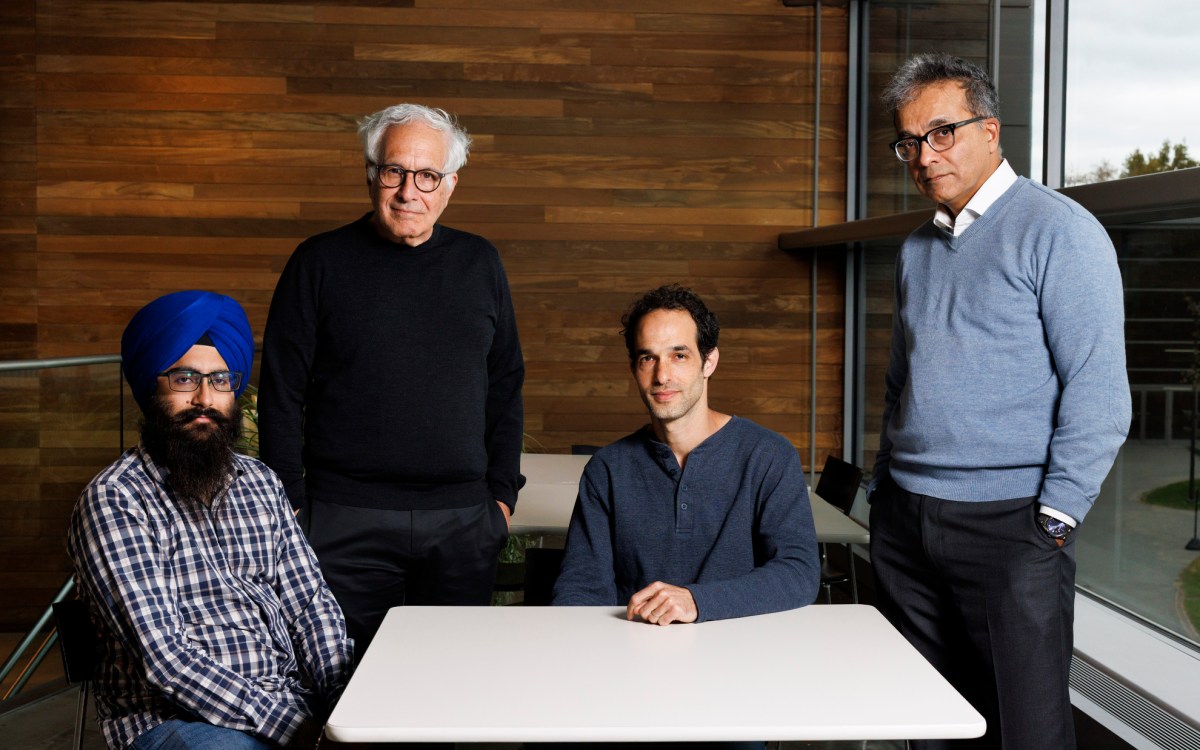
Want to speed brain research? It’s all in how you look at it.
New AI-enhanced scanning method promises to boost quest for high-resolution mapping
-

-

‘It just feels good when you solve the hard problems’
Why do students volunteer to take this notoriously difficult math exam? For the fun of it.
-
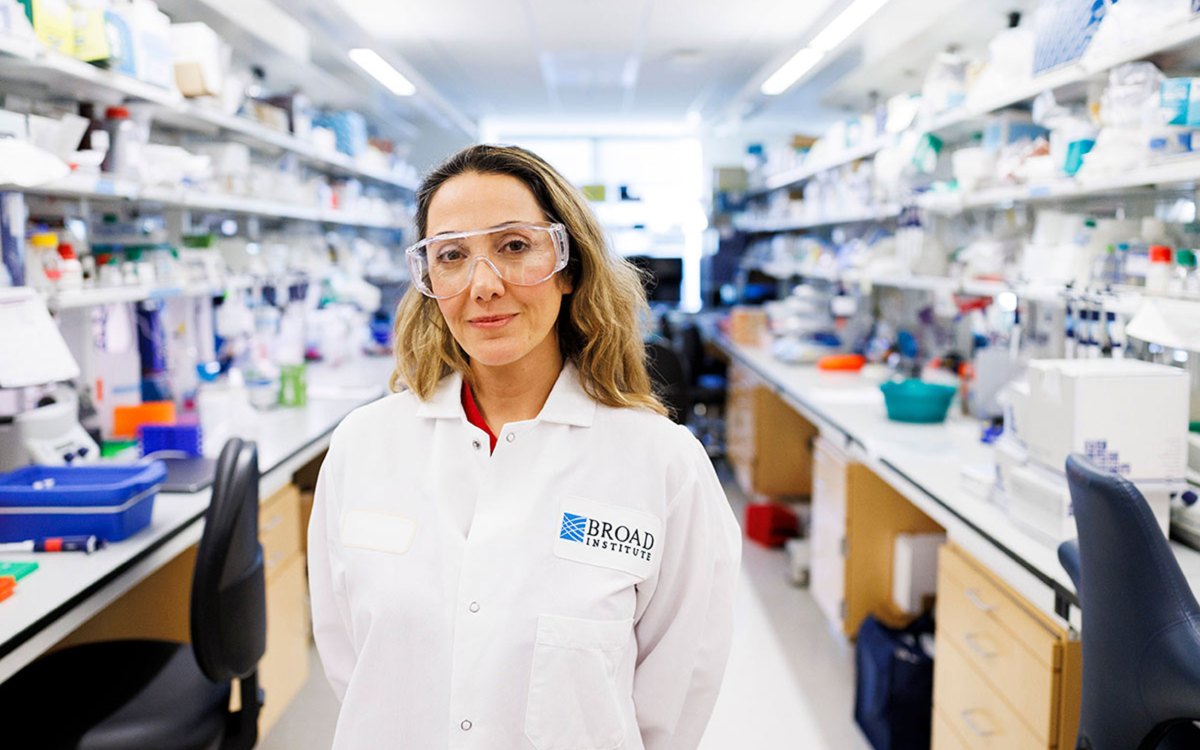
Stopping the next pandemic
Disease surveillance network faced ‘existential cliff’ despite proven success. Then came the $100 million.
-

Rethinking — and reframing — superintelligence
Microsoft researcher says separating AI from people makes systems dangerous and unproductive
-

First, male gets heated up, then female, and then, you know
Study shows infrared radiation from plants serves as invitation to pollinating insects
-
Genetic sex determination let ancient species adapt to ocean life
A new analysis of extinct sea creatures suggests that the transition from egg-laying to live-born young opened up evolutionary pathways that allowed these ancient species to adapt to and thrive…
-
China could meet its energy needs by wind alone
A team of environmental scientists from Harvard and Tsinghua University has demonstrated the enormous potential for wind-generated electricity in China.
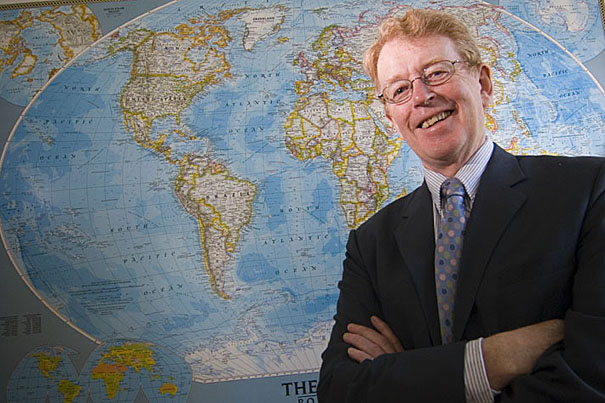
-
Building human cooperation: Carrots work better
Rewards go further than punishment in building human cooperation and benefiting the common good, according to research published in the journal Science by researchers at Harvard University and the Stockholm School of Economics.
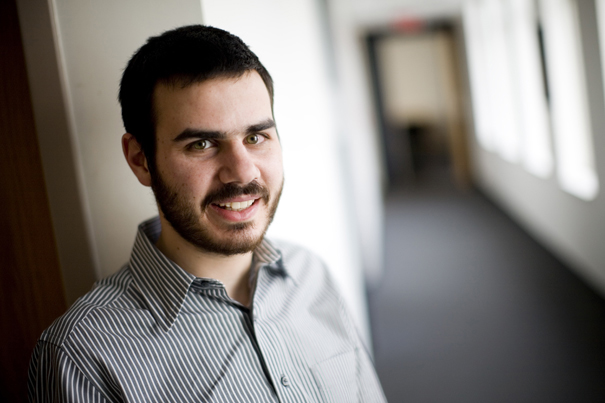
-
Humans and computers connect in Discovery Room
Chia Shen at the Scientists Discovery Room Lab is devising new ways for researchers to visually explore large data sets.

-
Two centers join fellowship programs
The Berkman Center and the Center for Research in Computation and Society (CRCS) have joined their fellowship programs for the 2009-10 academic year.
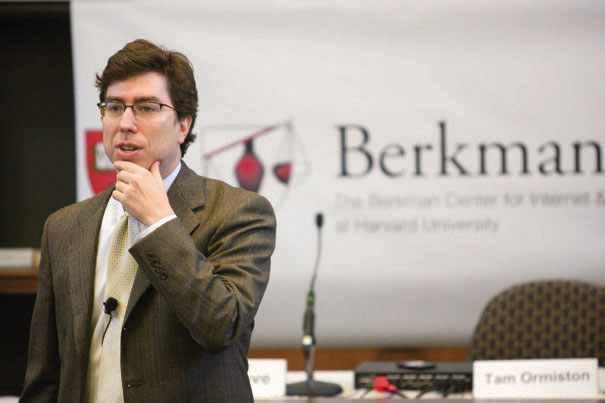
-
What really matters
Outcomes matter more than intention when choosing to punish or reward individuals who’ve caused accidents, according to new research from Harvard University.
-
Research team at Harvard to develop small-scale mobile robotic devices
A multidisciplinary team of computer scientists, engineers, and biologists at Harvard received a $10 million National Science Foundation (NSF) Expeditions in Computing grant to fund the development of small-scale mobile robotic…
-
After bloody revolution: Bringing science back to Liberian classrooms
Adam Cohen and Ben Rapoport needed materials to conduct a science experiment, but supplies were hard to come by. Cohen, assistant professor of chemistry and chemical biology and of physics…
-
Chu urges U.S. to anticipate its energy future
U.S. Energy Secretary Steven Chu described the U.S. failure to anticipate changes in the global energy supply during a talk at the John F. Kennedy School of Government Aug. 6.…
-
Scientists expect wildfires to increase as climate warms in the coming decades
As the climate warms in the coming decades, atmospheric scientists at Harvard’s School of Engineering and Applied Sciences (SEAS) and their colleagues expect that the frequency of wildfires will increase…
-
Parents concerned about financial impact of possible school flu closings
Substantial numbers of parents who have children in school or day care report that two-week closings in the fall would present serious financial problems for them, according to the results…
-
Newly discovered pheromone helps female flies tell suitors to ‘buzz off’
There she is again: the cute girl at the mall. Big eyes. Long legs. She smiles at you. You’re about to make your move … but wait! What’s she wearing?…
-
New Library Park in Allston will be quiet, green, tree-filled learning space
Last week (July 8), Harvard University planners presented preliminary designs to residents of Allston for the new 1.74-acre public park to be constructed behind the Honan-Allston Branch of the Boston Public Library on North Harvard Street.
-
Childhood adversity may affect processing in the brain’s reward pathways
New research shows that childhood adversity is associated with diminished neural activity in certain regions of the brain. Harvard researchers used functional magnetic resonance imaging (fMRI) to monitor brain activity…
-
Neuroimaging suggests truthfulness requires no act of will for honest people
A new study of the cognitive processes involved with honesty suggests that truthfulness depends more on absence of temptation than active resistance to temptation. Using neuroimaging, psychologists looked at the…
-
Four from Harvard win Presidential Early Career Awards in Science and Engineering
Four Harvard researchers have been named among the winners nationwide of this year’s Presidential Early Career Awards for Scientists and Engineers (PECASE). They are Roland G. Fryer Jr., Patrick J.…
-
Building a stellar time machine
Harvard researchers are building a celestial time machine that lets astronomers look back at hundreds of thousands of objects in the Earth’s skies over the past century.

-
Social pressure keeps African AIDS patients in treatment
One of the surprises of the global AIDS epidemic has been the high level of adherence to antiretroviral drug treatment in sub-Saharan Africa.

-
Massachusetts Lt. Governor tours Harvard research facilities
Massachusetts Lt. Governor Timothy Murray on Wednesday toured Harvard labs in both Cambridge and Boston. “The Patrick Administration has been very supportive of the university research sector in Massachusetts and…
-
Study: Women more likely than men to reject unattractive babies
Women are more likely than men to reject unattractive-looking babies, according to a study by researchers at Harvard-affiliated McLean Hospital, possibly reflecting an evolutionary-derived need for diverting limited resources towards…
-
Visitors will gravitate to ‘Black Holes’ exhibit
On Sunday, June 21, a new exhibit developed by educators and scientists at the Harvard-Smithsonian Center for Astrophysics (CfA) will open at the Boston Museum of Science. Called “Black Holes:…
-
Peculiar, junior-sized supernova discovered by New York teen
In November 2008, Caroline Moore, a 14-year-old student from upstate New York, discovered a supernova in a nearby galaxy, making her the youngest person ever to do so.
-
Physics for the musical masses
Harvard physicist Lisa Randall is taking Paris’ opera-going public to the fifth dimension this month, working with a composer and artist to present an opera that incorporates Randall’s theories about…
-
Green reunions: Groundwork set
As of June 4, Harvard has celebrated 358 commencements. Add to that the simultaneous celebration of untold thousands of reunions.

-
Physics for musical masses
Harvard physicist Lisa Randall is taking Paris’ operagoing public to the fifth dimension this month, working with a composer and artist to present an opera that incorporates Randall’s theories about extra dimensions of space.
-
‘Water guy’ John Briscoe stays in motion
For someone who deep-sixed his BlackBerry (instant e-mail was taking over his life) and traded the local newspaper for a good book (“What do I need to know about Celtics’ scores?”), John Briscoe ’76 is as worldly a person as you are ever likely to meet.

-
Trading energy for safety, bees extend legs to stay stable in wind
New research shows some bees brace themselves against wind and turbulence by extending their sturdy hind legs while flying. But this approach comes at a steep cost, increasing aerodynamic drag and the power required for flight by roughly 30 percent, and cutting into the bees’ flight performance.
-
Geology is destiny
As a teenager in Toronto in the 1950s, Paul Hoffman would spend hours in the Royal Ontario Museum studying its collection of rocks and minerals. He became a passionate collector, trading rocks with friends and exploring abandoned mines in search of crystals.
-
Class of 1984 takes giant step in reducing carbon footprint
For its fifth reunion, the Class of 1984 added community service to the celebration — a novel feature that other reuniting classes have since copied.
-
Health, life insurers hold billions in tobacco stocks
More than a decade after Harvard Medical School researchers first revealed that life and health insurance companies were major investors in tobacco stocks – prompting calls upon them to divest…

